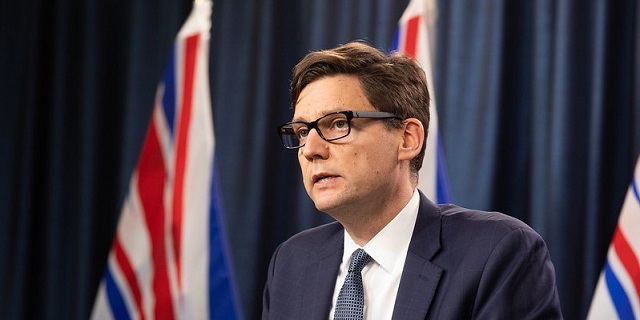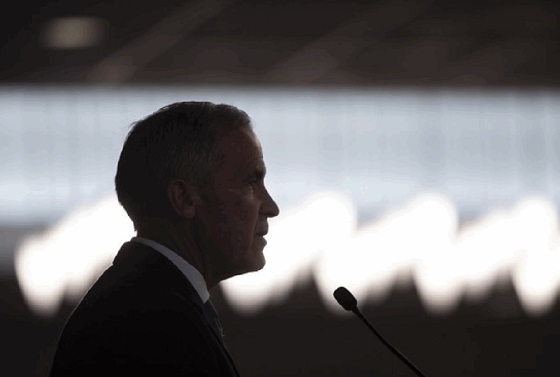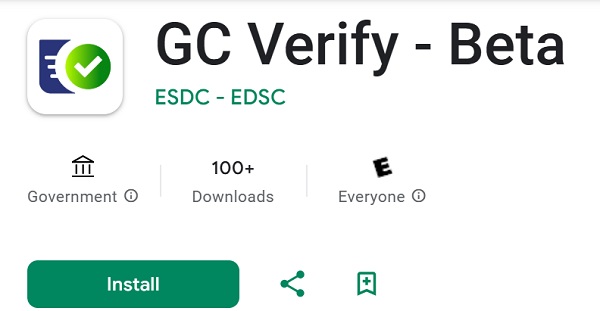Indigenous
The Quiet Remaking of Canada

From the Frontier Centre for Public Policy
B.C. residents sat up and took notice of this shocking change when the Eby government announced that it planned to embark on a plan of “co-governance” with its indigenous population – a plan that would have given 5% of B.C.’s population a veto over every aspect of public land useage in the province.
Most Canadians are unaware that a campaign to remake Canada is underway. The conception of that most Canadians have of their country – that it is, one nation, in which citizens of different ethnic, religious and racial groups are all treated equally, under one set of laws – is being fundamentally transformed. B.C. residents sat up and took notice of this shocking change when the Eby government announced that it planned to embark on a plan of “co-governance” with its indigenous population – a plan that would have given 5% of B.C.’s population a veto over every aspect of public land useage in the province.
An emphatic “No” from an overwhelming majority of citizens put an end to this scheme – at least temporarily.
But the Eby government continues to move forward with its plan to transform the province into a multitude of semi-autonomous indigenous nations to accommodate that 5% of the indigenous B.C. population. It is proceeding with a plan that recognizes the Haida nation’s aboriginal title to the entire area of the traditional Haida territory. It would basically make Haida Gwaii into what would in essence be a semi-independent nation, ruled by Haida tribal law.
Many of us are familiar with that exceptionally beautiful part of Canada, where the Haida have lived for thousands of years. Misty Haida Gwaii, formerly known as the Queen Charlotte Islands, is a magical place. Until now, it has been a part of Canada. How would this Haida agreement change that?
Non-Haida residents of Haida Gwaii are probably asking themselves that question. Although they are being told that their fee simple ownership and other rights will not be affected by the Haida agreement, is that true? If one must be Haida by DNA to fully participate in decisions, how can it be argued that non Haida residents have rights equal to a Haida?
For example, the Supreme Court ruled in the Vuntut Gwitchin case that, based on the allegedly greater need of maintaining so-called Indigenous cultural “difference”, individual Indigenous Canadians can now be deprived by their band governments of their rights under the Canadian Charter of Rights and Freedoms on their home reserves and self-governing territories. Simply put, the law of the collective- namely tribal law- will apply.
So, tribal law takes precedence over Canadian law. And will a non-Haida resident be deprived of rights that he would enjoy anywhere else in Canada? For that matter, will an indigenous, but non-Haida, resident have equal rights to a Haida, if he can’t vote in Haida elections? Will this plan dilute, or even eliminate, fee simple ownership for some.
Or this: Does a provincial government even have the power to make such an agreement in the first place? After all Section 91(24) of our Constitution Act gives the federal government responsibility for status Indians.
These are but a few of the many questions that has B.C. residents asking many questions. In fact, the proposed Haida agreement will likely be front and centre in the upcoming provincial election, and could usher in decades of litigation and uncertainty.
But the Eby government has made it clear that the Haida agreement will be the template for others that will follow. Considering the fact that there are at least 200 separate indigenous communities in B.C. this would be a very ambitious undertaking – especially in light of the fact that most of those 200 or so communities are tiny, and almost all are dependent on taxpayers for their continued existence.
Eby is responding to the Supreme Court’s astounding decision that aboriginal title existed, unless it had been surrendered by treaty. The court relied on the Royal Proclamation of 1763 to come to this decision. This was after what was the longest trial in the history of B.C. wherein the trial judge in that case, Chief Justice Allan McEachern, had written a masterful decision finding that aboriginal title did not exist as claimed by the indigenous parties to the action. The Supreme Court went on in subsequent cases to transform Canadian indigenous law and expand section 35 in a manner that emphasized the need for “reconciliation”, the primacy of the collective over the rights of the individual for indigenous people, and the need for indigenous “nation to nation” separateness, instead of assimilation. All of this was done by judicial fiat, with absolutely no input from the Canadian public. Senior Ontario lawyer, Peter Best, describes this radical transformation of Canada in his epic work, “There Is No Difference”.
The unfortunate decision by both the federal government and the B.C. government to adopt UNDRIP, (United Nations Declaration on the Rights of Aboriginal Peoples) and B.C.’s provincial version, DRIPA, (Declaration on the Rights of Indigenous Peoples) further muddied the waters.
What British Columbia will look like in 10 years is anyone’s guess, if the hundreds of indigenous communities in B.C. are successful in obtaining agreements similar to what the Haida negotiate. It also seems very likely that indigenous communities in other parts of Canada will see what the B.C. communities achieved, and want the same additional autonomy and land rights for themselves. In the treaty areas of Canada, namely mainly the prairies and parts of the north, the treaties, in theory, settle the issue. But, if the B.C. Indians succeed in obtaining superior entitlements, the treaty Indians will almost certainly agitate for “modern treaties” that include what the Haida received.
And the citizens of eastern Canada, who believe that their indigenous claims have been permanently settled long ago, are probably in for a rude shock. In “A New Look at Canadian Indian Policy” the late Gordon Gibson quotes a former senior bureaucrat in Indian Affairs who insisted on remaining anonymous. That source says bluntly that all of Canada will be at play if Canada does indeed become the “patchwork of tiny Bantustans” that journalist and visionary Jon Kay predicted in 2001, if we keep going down this “nation to nation” path.
In fact, it is quite possible that every one of the 600 or so indigenous communities in Canada will end up with at least as much “separateness” as the Haida obtained. Canada will be fundamentally transformed into a crazy quilt of mainly dependent reserves governed by tribal law. Surely the Fathers of Confederation didn’t work so hard to end up with such a backward, fractured Canada?
As we see this fundamental transformation taking place in B.C., and then heading eastward, I suspect that Canadians who do not want such a future for their country will start to ask themselves how we arrived at this point. How can a nation be fundamentally transformed with no input from the citizens? Don’t the Canadian people have to be consulted, as we watch our country being transformed by judicial fiat and tribal law? Doesn’t a constitutional process have to be invoked, as happened in the failed Meech Lake or Charlottetown Accords?
Most Canadians believe that history has not been kind to indigenous people, and that indigenous have legitimate claims that need to be addressed. But most Canadians also believe that Canada is one country, in which everyone should be equal.
Canadians also firmly believe that Canada should not be divided into racial enclaves, where different sets of laws are applied to different racial or ethnic groups. In fact, most Canadians would probably support the sub-title of the late Gordon Gibson book cited above: “Respect the Collective – Support the Individual”. Canadians want to see indigenous people succeed, and they support indigenous people in their fierce determination to hold on to their indigenous identity and culture. But they want indigenous people to succeed as Canadians – not in a Canada that has been carved up into racial ghettos, like slices of a cheap pizza.
The Haida agreement is the first highly visible slice – a symbol of a semi-independent “nation” within Canada, that will be governed by rights of the collective tribal law – as opposed to the rights of the individual. That takes us back thousands of years. Before the Haida agreement inspires hundreds of other such racial mini-states within Canada, should Canadians not have a say in what our country is becoming?
Or will we continue to let unelected judges, and faceless bureaucrats, determine our fate?
Brian Giesbrecht, retired judge, is a Senior Fellow at the Frontier Centre for Public Policy
Indigenous
Residential school burials controversy continues to fuel wave of church arsons, new data suggests

By Edgardo Sepulveda for Inside Policy
Church arsons surged again in 2024 according to new data released by Statistics Canada—continuing a disturbing trend first uncovered by a Macdonald-Laurier Institute investigation published last year.
Scorched Earth: A quantitative analysis of arson at Canadian religious institutions and its threat to reconciliation, which I published last April, warned that the arson wave – almost certainly spurred by ongoing anger over potential unmarked burials of children at residential schools –would not disappear without concerted government policy intervention.
Unfortunately, my prediction is proving accurate.
Newly available custom data from Statistics Canada confirms that arsons in 2024 continued at nearly double the baseline level established from 2011–17.
This persistent elevation is particularly concerning given that arson is a dangerous crime with significant financial costs and, in the case of religious institutions, broader implications for Canadian society and political discourse. Most importantly for those committed to Indigenous reconciliation, the apparent lack of effective policy response risks undermining public support for reconciliation efforts—suggesting these crimes are not being treated with the seriousness they deserve, particularly because many targets are Catholic churches associated with residential school legacies.
Scorched Earth developed specific terms and a conceptual framework to analyze arsons at religious institutions. First, I refer to “potential unmarked burials” rather than other terminology, including “mass graves” – language suggesting verified remains and, potentially, the site of clandestine burials. Neither has been established. No remains have been verified at any of the 21 announced sites. The Tk’emlúps te Secwépemc First Nation revised its own characterization of the Kamloops, BC, announcements in May 2024 to “probable unmarked burial sites,” a significant shift from its initial May 2021 announcement of “remains of 215 children.” This precipitated announcement, together with some of the initial media coverage in Canada and elsewhere, likely contributed to the intensity of the arson response.
Second, the conceptual framework, updated with the latest Statistics Canada data, separates “baseline” from “excess” arson associated with specific shocks, such as the announcements. It shows that arsons at religious institutions have remained elevated since the initial spike in 2021. Based on careful geographic statistical analysis presented in Scorched Earth, I demonstrated that the most likely explanation for elevated arsons was a criminal response prompted by the 17 announcements of potential unmarked burials at former residential schools, beginning in Kamloops, B.C., in May 2021. Four additional announcements occurred in 2024, bringing the total to 21. While data through 2023 showed no detectable increase in arsons related to the Israel-Gaza conflict, analysis of 2024 data suggests this changed: arsons in response to that conflict now constitute a minority of the increase above baseline levels, with the majority remaining those related to announcements of potential unmarked burials.
Investigation and Prosecution Rates Remain Insufficient for Effective Deterrence
Statistics Canada’s newly released custom clearance data for arson at religious institutions provides the first comprehensive official view of law enforcement effectiveness in these cases, superseding the preliminary compilation included in Scorched Earth.
Crimes in Canada are considered “solved” when police identify a suspect with sufficient evidence to support charges. Cases are then classified as “cleared” through two mechanisms: laying charges (“cleared by charge”) or alternative processes such as diversion programs (“cleared otherwise”).
As Figure 2 illustrates, the cleared-by-charge rate for all arson averaged 13.1 per cent over the 2011–24 period. For religious institutions, the yearly average reached 14.4 per cent—marginally higher but still concerning. The clearance rate for religious institutions shows significant year-over-year variability, reflecting the smaller statistical base compared to all arsons. The “cleared otherwise” category adds an average of 4.7 per cent for both arson types.
While these low clearance rates align with those for other property crimes, the continuing elevated arson rate suggests they provide insufficient deterrence for either first-time or serial arsonists. Evidence from Scorched Earth indicates that sustained clearance rates in the mid-30 per cent range—achieved by the National Church Arson Task Force (NCATF) in the United States during the 1990s—effectively reduced church arsons targeting predominantly Black congregations in the American South.
While my statistical analysis indicates that announcements of potential unmarked burials likely motivated many incidents, this remains circumstantial evidence. Direct evidence would require confessions or explicit statements of rationale from arrested arsonists, or credible claims of responsibility from organized groups. Out of the 306 arsons at religious institutions over the 2021-24 period, 53 resulted in charges and 13 were cleared through alternative processes, totaling 64 cleared incidents—an overall clearance rate of 21 per cent.
A clearance rate at this level, while insufficient for effective deterrence, makes it unlikely that most arsons during this period resulted from organized political, ideological, or anti-religious campaigns. A coordinated campaign would likely be visible to investigators even at this clearance level. Since police identify suspects in far more cases than they prosecute, investigators develop a broader perspective on potential culprits than clearance rates alone suggest. Law enforcement officials have not provided any indication of such organized campaigns.
Federal and Provincial Funding Addresses Searches But Ignores Consequences
Neither federal nor provincial governments have introduced policy initiatives addressing elevated arson rates at religious institutions, despite substantial new funding for related matters.
Following the Kamloops announcement, the federal government launched the Residential Schools Missing Children Community Support program, providing $246 million to hundreds of communities, including for research and field investigations. Separately, British Columbia, Alberta, Ontario, and other provinces have committed hundreds of millions in additional dollars, including programs to address mental health effects from the search process and announcements.
This funding inventory highlights a significant policy gap: substantial resources address the cause—announcements of potential unmarked burials—while none target the effect: arsons at religious institutions.
Even viewed narrowly as a crime issue, recent government responses to other property crimes demonstrate available policy tools. When auto theft peaked in 2023, the federal government announced $121 million in federal support, convened a national summit with all levels of government and law enforcement, and released a National Action Plan by May 2024.
Policy Gaps and a Call to Action
The NCATF, created in response to arsons targeting Black churches in the 1990s United States, achieved clearance rates sufficient to reduce incidents. Canada possesses the same policy tools but has not deployed them for residential school-related arsons.
This is not a matter of capacity or institutional precedent. Recent government responses to other serious property crimes, such as auto theft, demonstrate that Canada can mobilize coordinated federal-provincial action when it chooses to. The apparent policy inaction since 2021 for residential school-related arsons must end.
Canada is not powerless to stop the arsonists. The policy recommendations set out in Scorched Earth continue to be valid:
- Create a national or regional integrated police/fire investigations unit focused specifically on arson at religious institutions. This integrated unit would investigate arsons at all religious institutions—Christian, Muslim, Jewish, and others.
- Improve Indigenous police and fire protection services, including to ensure full Indigenous participation in the integrated unit.
- Complete the long-running project of building and maintaining a comprehensive and timely national and on-reserve database of fire statistics.
Law enforcement officials must thoroughly investigate and prosecute the arsonists. The attacks threaten reconciliation and full Indigenous equality—and they must be condemned by all Canadians.
Economist Edgardo Sepulveda has more than 30 years of experience advising clients in more than forty countries. He has written for Jacobin magazine, TVO Today, and the Alberta Federation of Labour, and has been lead author of three peer-reviewed academic articles in the last five years. He received his BA (Hon) from the University of British Columbia and his MA from Queen’s University, both in Economics. He established Sepulveda Consulting Inc. in 2006.
illegal immigration
EXCLUSIVE: Canadian groups, First Nation police support stronger border security

First Nation police chiefs join Texas Department of Public Safety marine units to patrol the Rio Grande River in Hidalgo County, Texas. L-R: Dwayne Zacharie, President of the First Nations Chiefs of Police Association, Ranatiiostha Swamp, Chief of Police of the Akwesasne Mohawk Territory, Brooks County Sheriff Benny Martinez, Jamie Tronnes, Center for North American Prosperity and Security, Goliad County Sheriff Roy Boyd. Photo: Bethany Blankley for The Center Square
From The Center Square
By
Despite Canadian officials arguing that the “Canada-U.S. border is the best-managed and most secure border in the world,” some Canadian groups and First Nation tribal police chiefs disagree.
This week, First Nation representatives traveled to Texas for the first time in U.S.-Canadian history to find ways to implement stronger border security measures at the U.S.-Canada border, including joining an Operation Lone Start Task Force, The Center Square exclusively reported.
Part of the problem is getting law enforcement, elected officials and the general public to understand the reality that Mexican cartels and transnational criminal organizations are operating in Canada; another stems from Trudeau administration visa policies, they argue.
When it comes to public perception, “If you tell Canadians we have a cartel problem, they’ll laugh at you. They don’t believe it. If you tell them we have a gang problem, they will absolutely agree with you 100%. They don’t think that gangs and cartels are the same thing. They don’t see the Hells Angels as equal to the Sinaloa Cartel because” the biker gang is visible, wearing vests out on the streets and cartel operatives aren’t, Jamie Tronnes, executive director of the Center of North American Prosperity and Security, told The Center Square in an exclusive interview.
The center is a US-based project of the MacDonald-Laurier Institute, the largest think tank in Canada. Tronnes previously served as a special assistant to the cabinet minister responsible for immigration and has a background in counterterrorism. She joined First Nation police chiefs to meet with Texas law enforcement and officials this week.
Another Canadian group, Future Borders Coalition, argues, “Canada has become a critical hub for transnational organized crime, with networks operating through its ports, banks, and border communities.” The Sinaloa and Jalisco New Generation Mexican cartels control the fentanyl, methamphetamine and cocaine business in Canada, partnering with local gangs like the Hells Angels and Chinese Communist Party (CCP)-linked actors, who launder profits through casinos, real estate, and shell companies in Vancouver and Toronto, Ammon Blair, a senior fellow at the Texas Public Policy Foundation, and others said at a coalition event prior to First Nation police chiefs and Tronnes coming to Texas.
“The ’Ndrangheta (Italian Mafia) maintains powerful laundering and import operations in Ontario and Quebec, while MS-13 and similar Central American gangs facilitate human smuggling and enforcement. Financial networks tied to Hezbollah and other Middle Eastern groups support laundering and logistics for these criminal alliances,” the coalition reports.
“Together, they form interconnected, technology-driven enterprises that exploit global shipping, cryptocurrency, and AI-enabled communications to traffic whatever yields profit – narcotics, weapons, tobacco, or people. Taking advantage of Canada’s lenient disclosure laws, fragmented jurisdictions, and weak cross-border coordination, these groups have embedded themselves within legitimate sectors, turning Canada into both a transit corridor and safe haven for organized crime,” the coalition reports.
Some First Nation reservations impacted by transnational crime straddle the U.S.-Canada border. One is the Akwesasne Mohawk Reservation, located in Ontario, Quebec, and in two upstate New York counties, where human smuggling and transnational crime is occurring, The Center Square reported. Another is the Tsawwassen First Nation (TWA) Reservation, located in a coastal region south of Vancouver in British Columbia stretching to Point Roberts in Washington state, which operates a ferry along a major smuggling corridor.
Some First Nation reservations like the TWA are suffering from CCP organized crime, Tronnes said. Coastal residents observe smugglers crossing their back yards, going through the reserve; along Canada’s western border, “a lot of fentanyl is being sent out to Asia but it’s also being made in Canada,” Tronnes said.
Transnational criminal activity went largely unchecked under the Trudeau government, during which “border security, national security and national defense were not primary concerns,” Tronnes told The Center Square. “It’s not to say they weren’t concerns, but they weren’t top of mind concerns. The Trudeau government preferred to focus on things like climate change, international human rights issues, a feminist foreign policy type of situation where they were looking more at virtue signaling rather than securing the country.”
Under the Trudeau administration, the greatest number of illegal border crossers, including Canadians, and the greatest number of known, suspected terrorists (KSTs) were reported at the U.S.-Canada border in U.S. history, The Center Square first reported. They include an Iranian with terrorist ties living in Canada and a Canadian woman who tried to poison President Donald Trump, The Center Square reported.
“Had it been a priority for the government to really crack down and provide resources for national security,” federal, provincial and First Nation law enforcement would be better equipped, funded and staffed, Tronnes said. “They would have better ways to understand what’s really happening at the border.”
In February, President Donald Trump for the first time in U.S. history declared a national emergency at the northern border and ordered U.S. military intervention. Months later, his administration acknowledged the majority of fentanyl and KSTs were coming from Canada, The Center Square reported.
Under a new government and in response to pressure from Trump, Canada proposed a $1.3 billion border plan. However, more is needed, the groups argue, including modernizing border technology and an analytics infrastructure, reforming disclosure and privacy rules to enable intelligence sharing, and recognizing and fully funding First Nation police, designating them as essential services and essential to border security.
“National security doesn’t exist without First Nation policing at the border,” Dwayne Zacharie, First Nations Chiefs of Police president, told The Center Square.
-

 Bruce Dowbiggin1 day ago
Bruce Dowbiggin1 day agoBe Careful What You Wish For In 2026: Mark Carney With A Majority
-

 Energy1 day ago
Energy1 day agoNew Poll Shows Ontarians See Oil & Gas as Key to Jobs, Economy, and Trade
-

 Fraser Institute1 day ago
Fraser Institute1 day agoCarney government sowing seeds for corruption in Ottawa
-

 International1 day ago
International1 day agoNo peace on earth for ISIS: Trump orders Christmas strikes after Christian massacres
-

 Alberta1 day ago
Alberta1 day agoAlberta Next Panel calls for less Ottawa—and it could pay off
-

 Business21 hours ago
Business21 hours agoSocialism vs. Capitalism
-

 Daily Caller1 day ago
Daily Caller1 day agoUS Halts Construction of Five Offshore Wind Projects Due To National Security
-

 Alberta1 day ago
Alberta1 day agoAlberta project would be “the biggest carbon capture and storage project in the world”





